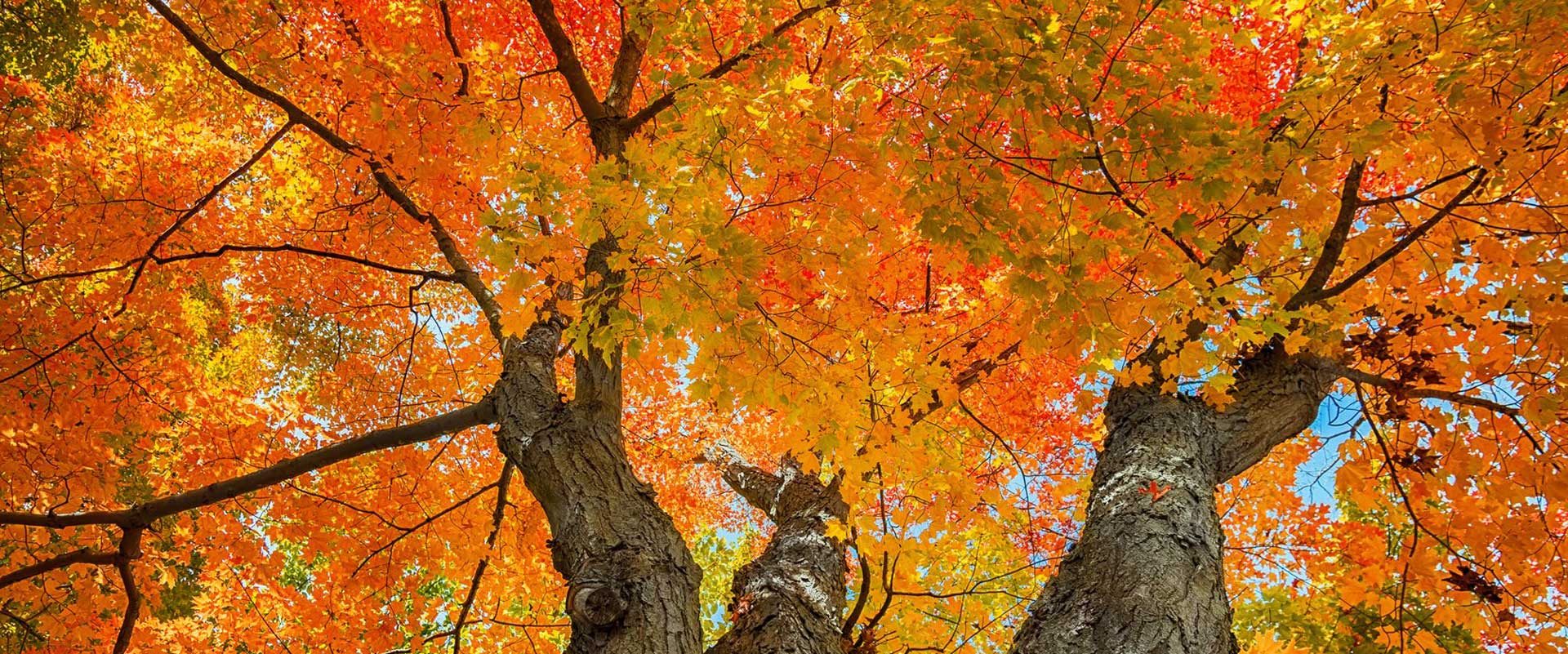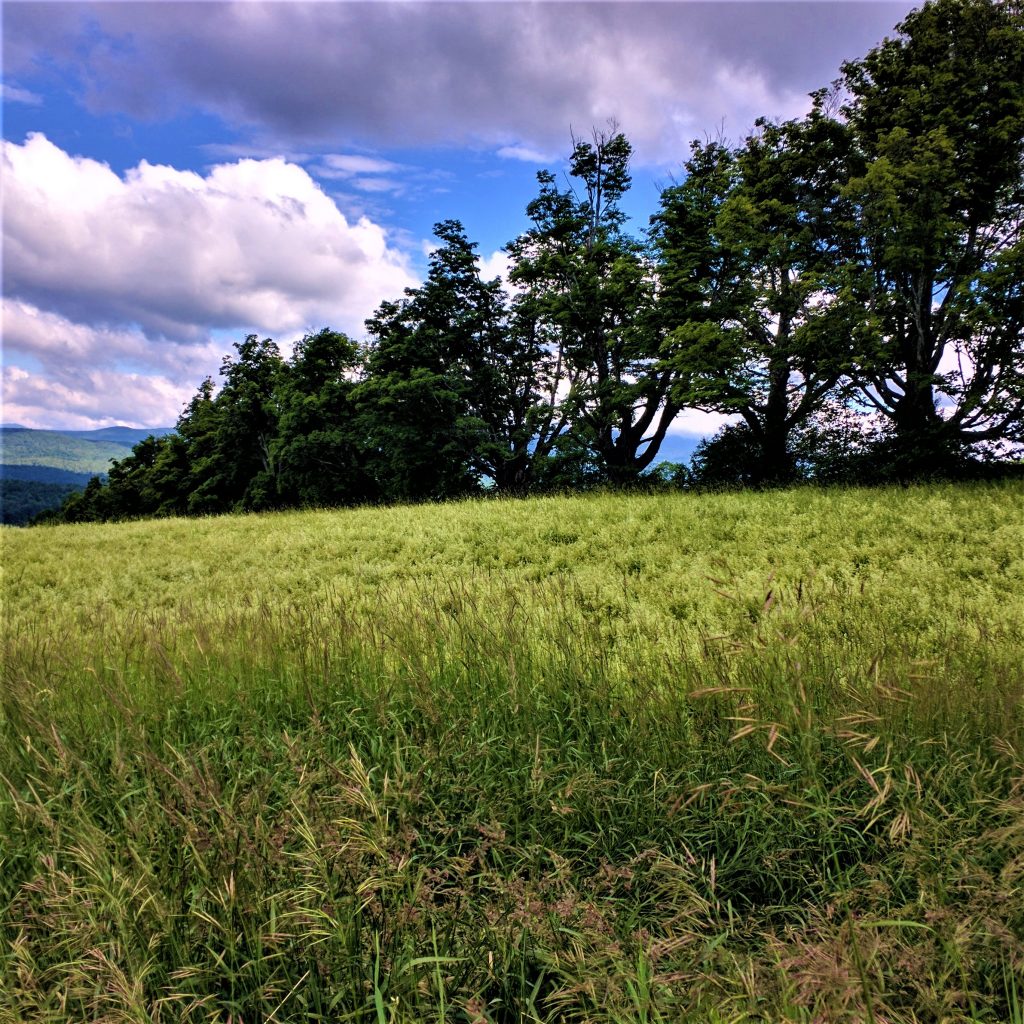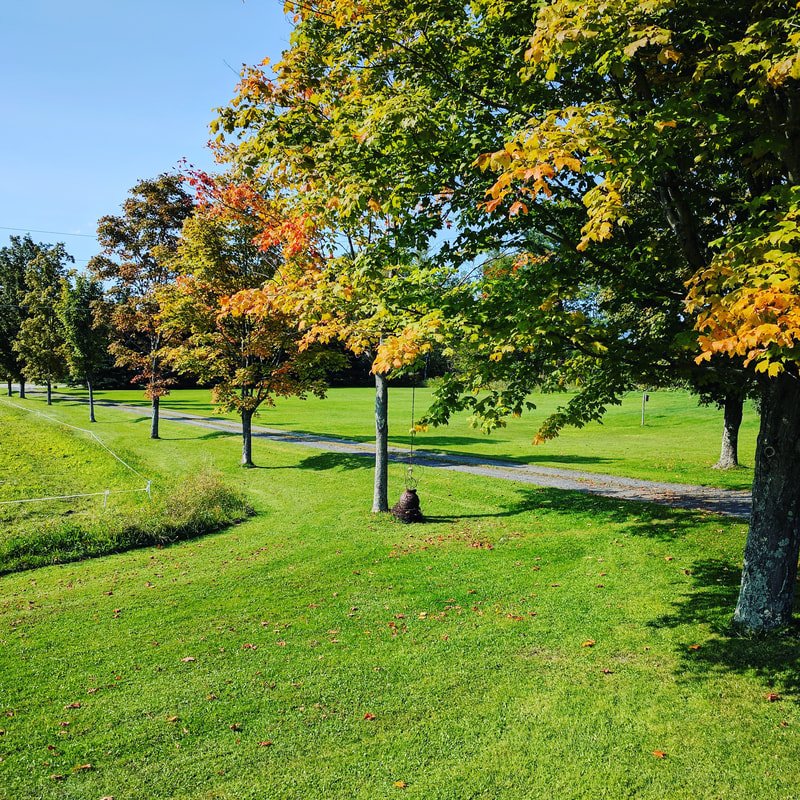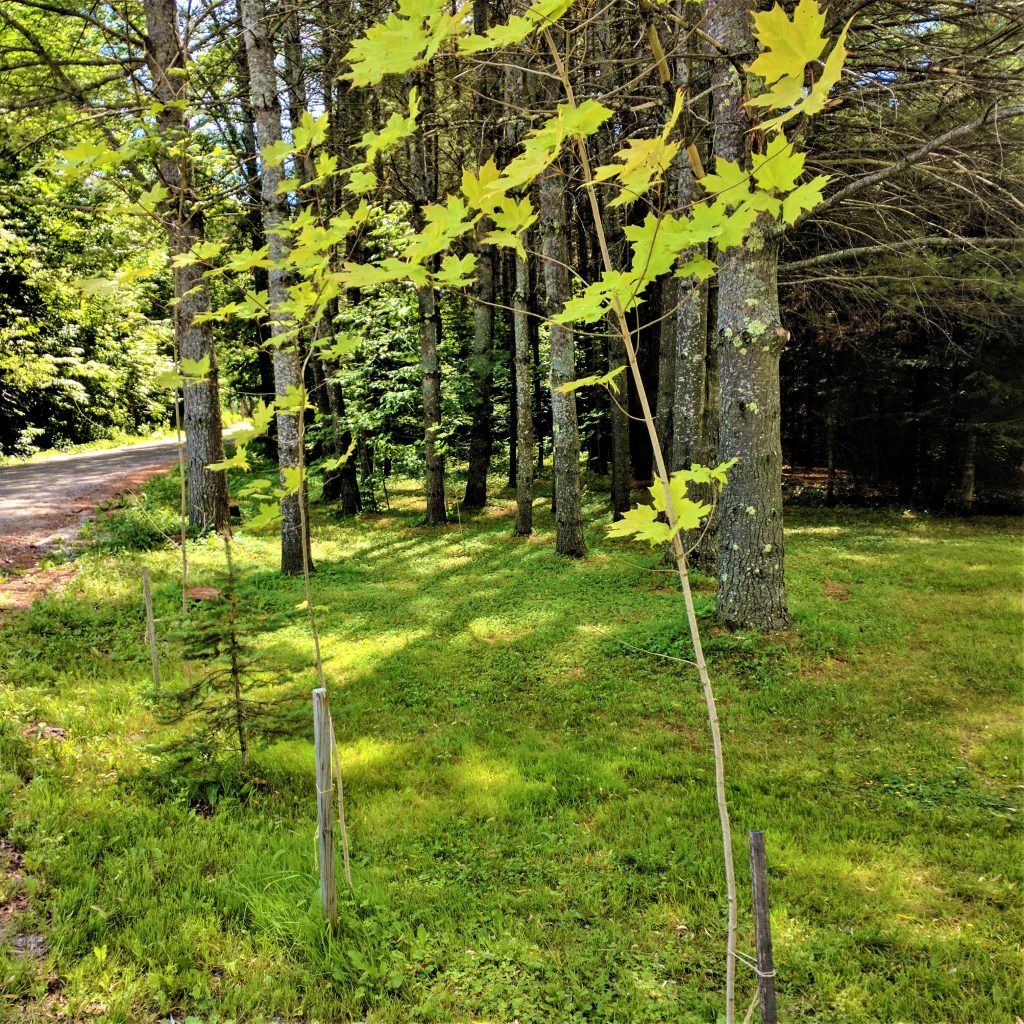Here in sugar country, it is not uncommon to find oneself travelling down a country lane in the dappled shadows cast by parallel rows of giant sugar maples. How did that happen? Might it happen again?
Sugars with a view: sugar maples planted long ago on Sparrow Farm Road in Montpelier, Vermont.
This familiar and beautiful natural-geometric feature—found alongside fields and forests alike—is no coincidence, but—rather like crop circles or rock features found elsewhere in the world—the remnants of regional practices once adhered to with fervor bordering on religiosity: the planting of sugar maples to augment the sugar supply of one’s family, one’s descendants and the value of the family farm.
Planting one’s own sugar maples, for subsistence maple syrup production at least, is a practice that has fallen out of vogue with the disappearance of the family farm but that may be enjoying a resurgence, says Vermont Evaporator Company customer Bruce Wolf. And Bruce should know: thirty-five years ago, at a time when such a thing was relatively unheard of, he planted sugar maples on open areas of his homestead in central New Jersey so that he could make maple syrup in future decades. (Having enjoyed his debut sugaring season on none other than the Sapling Evaporator, Bruce reports a certain increase in his popularity among family and friends. Word to the wise: sugaring is a great social-distancing activity.)
For about the same length of time, Bruce and his wife Debbie have owned and operated the Wolf’s Den Nursery in Millstone, New Jersey. With their fingers on the pulse of hobby sugar making and professional tree retail, the Wolfs are in as good a position as any to comment on the intersection of the two.
While the Wolf’s are called upon to provide homeowners with sugar maples for their aesthetic addition to a domestic landscape—in addition to the sugar maple, they sell patented varieties developed for their ability to be beautiful in different climates, urbanity and weather conditions—they have recently begun sourcing maples developed specifically for sugaring. The sap of one of the varieties, the “Super Sweet,” was developed at the Cornell Maple Program to be up to six or seven percent sugar, a figure that brings the ratio of sap to syrup from 40:1 down to 20:1 or lower. Imagine that!
The Wolf’s purchase responds not only to their own desire to plant a few Super Sweets on their own property, but to their growing sense that there is a market for these specialty maple trees, at least in rural New Jersey; the sense, in other words, that today’s homeowners and homesteaders are returning to a practice observed by their subsistence-farming ancestors. Planting maples for sugar is a thing again!
Younger sugar maples lining a country road in central Vermont. These beauties are just starting to show their seasonal rainbow colors.
Where to find the “Super Sweet” and other sugar maples? Your local nursery should have a lead on sugars and the “Super Sweet” (and if they don’t, call the Wolfs) or on any of the other varieties that might suit your situation: the “Bonfire” and “Fall Fiesta” that produce beautiful foliage in warmer climates, the “Adirondack” and “Crescendo” that are drought resistant, the “Green Mountain,” a hybrid of the black and sugar maples, that is appropriate for hot, dry, root-bound applications (think urban and suburban street side plantings). Then there’s the “Wild Spire,” the “Legacy,” and the list goes on and on. Whatever species you choose, if you are able to get your hands on some 1″ to 1 1/2″ caliper trees (caliper = diameter of tree 12″ off the ground) and care for them well, you just may be sugaring with them in fifteen years or so.
Bruce and Debbie counsel their customers to plant sugar maples out in the open in full sun: the productivity of a maple as a source of sugar being related to how extensive its root system is – a system which mirrors the crown. (This explains the roadside plantings, says Bruce, as a bigger crown means more sap.) Other tips: dig a hole six to eight inches wider than the roots, fill the hole with water, loosen the ball, plant so that the trunk is slightly more exposed than it was in the pot, and make sure the soil is either naturally well draining or amended to be so (like most of us sugar makers, the sugar maple hates having wet feet). Plant in spring or fall, and water well upon planting and at any point in its first growing season that it is hot and dry for a week or more. Protect the trunk from deer with a mesh sleeve early on, use a 10/10/10 or organic fertilizer after a year if you wish, and prune dead branches annually.
A brand new roadside sugar maple planting. Note the stakes and critter protection.
So if, like Bruce and Debbie, you are committed to subsistence maple sugar making for the long haul—that old fashioned ideal that just may be making a comeback here in sugar country—you may want to pay homage to the farmers of yesteryear by planting a row or two for your family, your property, and the next guy or gal. I know I’m thinking on it.




